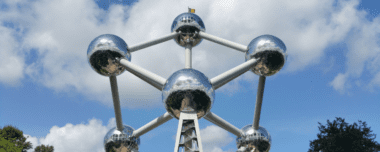Summary
- NextGenerationEU represents an opportunity for Irish companies to break into new markets or scale their presence in existing markets
- EU member states are seeking to digitalise their transport infrastructure and introduce or improve smart, sustainable mobility options as rapidly as possible, with hundreds of projects set to kick off over the next couple of years
- The Enterprise Ireland Eurozone team can help you find the right mobility projects to target
- Click or scroll down for more information about the mobility market in:
Mobility is one of the fastest-growing sectors in Europe. That’s no surprise, given the urgency of the fight to reduce emissions and combat climate change, the surge in digital technologies enabling smart cities and towns, and the reasonable desire of urban dwellers in particular to get around quickly and easily.
Mobility covers public transport such as buses, trams and trains, along with active modes such as cycling, shared mobility solutions such as scooters and bicycles, and electric vehicles, along with data-driven solutions for traffic management and other challenges.
The multi-billion euro flood of NextGenerationEU funding, distributed through national recovery and resilience plans, is amping up the speed of growth in this already soaring sector. The influx of funding amplifies what is already a significant opportunity for Irish companies to enter new markets or scale their operations in other markets.
Mobility cuts across three of the six pillars of the EU’s Recovery and Resilience Facility: the green transition, digital transformation and smart, sustainable and inclusive growth.
Irish firms thriving in Europe
A significant cluster of Irish companies is already winning business across the mobility space in Europe.
Taoglas, for example, provides antennae for micromobility products to significant players such as fifteen (previously Zoov), while CitySwift is pushing to digitialise the management of bus routes and Civic offers cities the ability to better manage traffic through sensors and data.
Zeus, an Irish company that operates three-wheeled electric scooter hire services, is already offering services in more than 20 German cities, as well as in Croatia, Italy, Norway, Sweden and Malaysia. Anadue, with which Zeus partners, is another Irish firm active in the space – it offers analytics for micromobility.
“Clusters like this offer a competitive advantage,” explains Jens Altmann, Enterprise Ireland’s sector lead for future mobility, “because the Irish are very good at collaborating and forming a joint offer, which can be a stronger proposition. And of course you can leverage networks through the other companies in the cluster.”
He adds that, regardless of the market, any potential entrant needs to consider how they will add value to the local mobility ecosystem.
“People will choose the local offer if it is the same. You need a strong selling point, which you get through collaborating or having a stronger technology than others.
“Irish companies tend to be deeper in the value chain. They’re good at niche enabling technologies and world leaders in some fields. Therefore, it’s crucial to build up networks and to have local partners. That’s key for most mobility companies, especially for new market entrants.”
Understand the opportunity
Significant current opportunities in most if not all European markets include charging infrastructure and other ways of optimising electric, connected or automated vehicles. Mobility as a service, where a user can plan, book and pay for a trip across multiple modes of transport in one app, is also of widespread interest.
Shared mobility remains an opportunity, but especially in smaller Tier 2 markets as capitals and other large cities are typically saturated. It’s worth checking dive.fluctuo.com for an overview.
Data management, data privacy, cybersecurity and systems integrity are also key opportunities, as true smart mobility hinges on both public and private sectors aligning on how to protect the oceans of data produced and used in this context.
Take time to access the market context
Across the EU, developments in mobility involves an interplay between the public and private sectors, and it’s vital to understand the balance before entering any new market.
“All these kind of transport systems or mobility systems need to be integrated, centralised and consolidated,” explains Altmann.
“That is all steered by the governments and the cities that regulate the market. Therefore, they’re the decision makers in the end. Either you tender to sell to the city or you get them to allow you to position your scooters for the consumer business.”
As in any sector, it’s important to gather market intelligence, appreciate the need for localisation and work to build local networks if you want to break into the mobility space in any EU market.
Expert advisors in Enterprise Ireland’s network of office across Europe, together with its Market Research Centre in Dublin can support your business as it investigates market opportunities, including by making local introductions and helping you to build your network.
If you are not sure where to start your export journey, get in touch.
Market snapshots
Belgium
Belgium remains car-dependent, with more than 30% of 1-2km journeys still made by car, but the entire mobility ecosystem is changing.

France
Having tended to lag in digitalisation, France is investing heavily in mobility and plans to be a leader in the mobility of tomorrow.

Germany
While engineering leader Germany is lagging when it comes to smart cities and sustainable mobility, the market is about to skyrocket.

Italy
Italy is shedding its reputation for slow digitalisation, with a boom in micromobility and extensive funding for smart and sustainable mobility.

Netherlands
Ranked first in Europe for green mobility, the Netherlands remains a good testing ground for smart mobility initiatives, with high levels of innovation and low language barriers.

Spain
Spain excels in high-speed rail and efficient public transport, but a huge push is on to move to zero-emission transport and travel.




